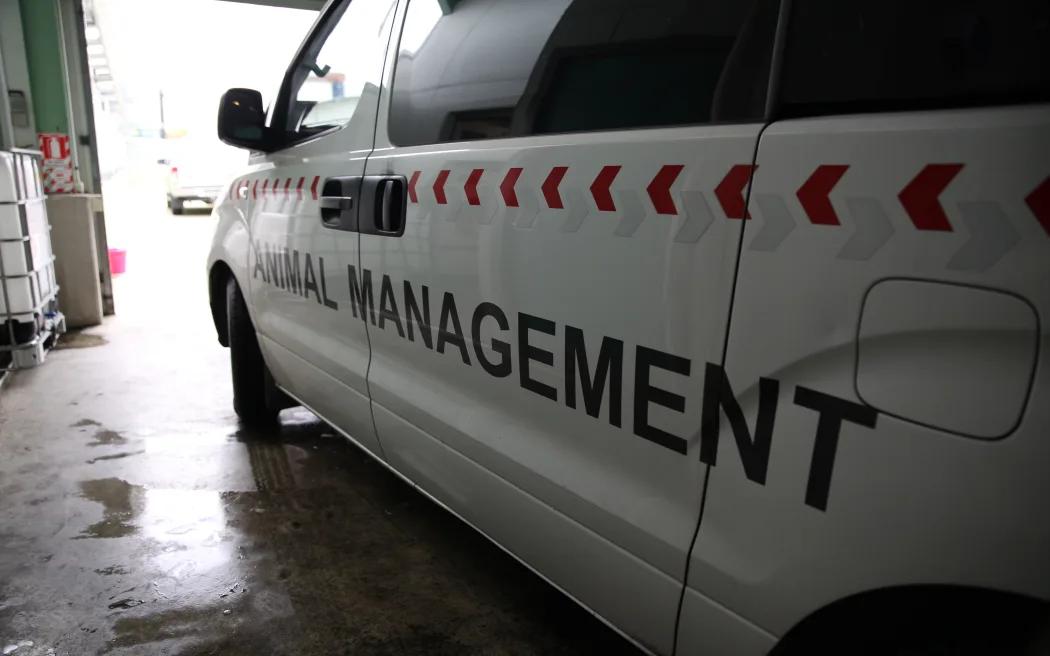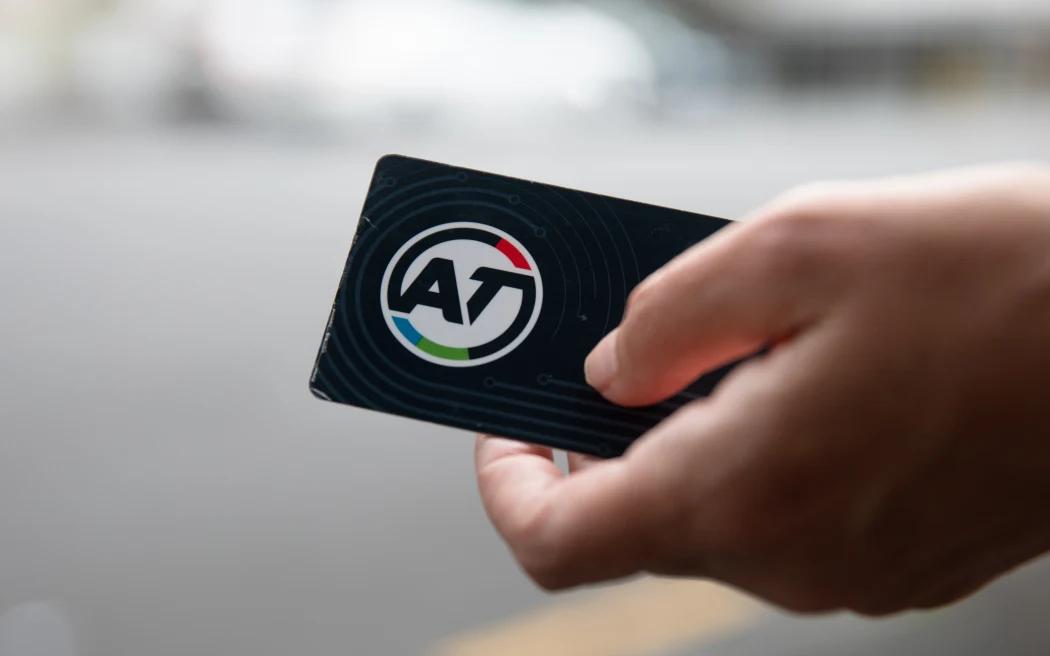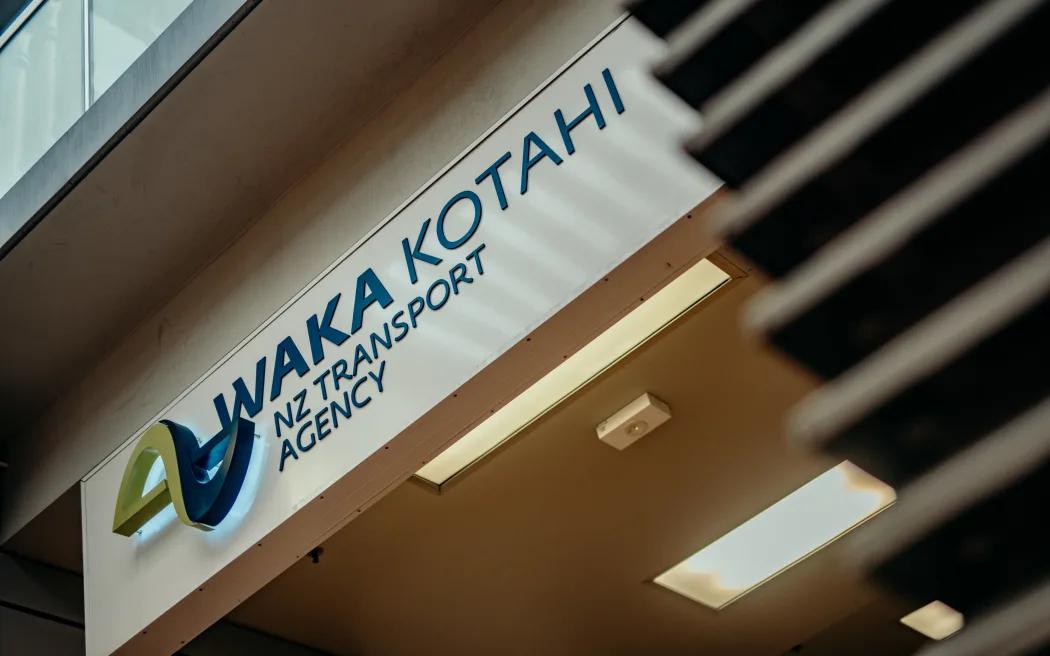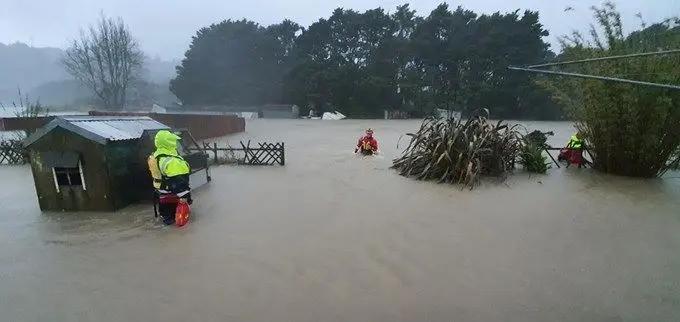

Auckland Council's long-term plan is open for public feedback until the end of the month.
Photo / RNZ
What the long-term plan means for Aucklanders: Part 2
Animal control, cutting "stupidly expensive" road infrastructure, and leasing the ports for a potential Auckland Future Fund are all proposed in the mayor’s long-term plan (LTP). In part two of her series on the LTP, Local Democracy Reporter Alka Prasad breaks down what it’s all about, and why it matters to Auckland.



Tinā: Heartfelt Sāmoan film soars to $5 million Box Office success


Will’s Word: Wellington’s mayoral race is pure political theatre


Residents taking the lead in crime patrols

Tinā: Heartfelt Sāmoan film soars to $5 million Box Office success


Will’s Word: Wellington’s mayoral race is pure political theatre
Auckland Council’s long-term plan (LTP) sets out what goals Auckland Council wants to achieve in the next 10 years, how they will do it and how they’re going to pay for it.
The plan goes to review every three years and this year’s review will decide the direction Auckland Council goes in from 2024 to 2034.
A majority of Auckland councillors agreed on Mayor Wayne’s Brown’s proposed LTP two weeks ago and Aucklanders can now give feedback on the plan.
Here are more key issues Brown wants to tackle in the LTP:
1. Community spending
Brown is proposing $5.9m per year to “allow our animal control officers to do their job more efficiently, including improvements and increasing capacity in our animal shelter network”.

The LTP proposes putting $5.9m to improve animal control
However, there won’t be any extra funding for Haumaru Housing, which provides affordable housing for older people.
Brown also wants to look at reducing the number of rubbish bins across Auckland homes.
2. Public transport and “stupidly expensive” road infrastructure
The current proposal could also mean increased parking charges and fines, hiring more parking enforcement staff and charging people for the time of day they use car parks.
Brown says Auckland Transport (AT) asked for $24b to get a programme up and running to support transport services around the city, but will instead receive $14b in his proposal.
The plan also proposes a $50 weekly public transport pass so adults would pay $50 maximum to use public transport per week.
Brown says the council may also bring in a Paywave option to pay for transport.

A $50 weekly cap on travel and Paywave options could be coming to Auckland Transport
He has also asked AT to improve the route from Māngere to the Airport.
He says: “Rather than focusing on a $40 billion tunnel, I would like to see Auckland Transport investigate the feasibility of a low-cost bike ferry connecting Northcote and the City Centre,” which brings him to cycleways.
Funding for cycleways will be cut by $141.5m in the current proposal, which will leave $430m for a lower cost cycleways programme on top of existing funding for current cycle projects.
He agrees to renew roads around the city if the government can fund $5.5b: “We can only afford to fund renewals if we have access to a fair contribution from the National Land Transport Fund.
“The government has underfunded road renewals in Auckland for years. They must fully fund their 51 per cent share of this spend and I will be lobbying the minister and Waka Kotahi hard to make sure this happens,” Brown says in the proposed LTP.
“Raised tables are also stupidly expensive. Cutting them should save at least $80 million dollars while still delivering cost effective location and risk based safety interventions.”
He’s also proposing to allocate $124m to improve unsealed roads: “It is important to recognise over 70 per cent of Auckland's land area is rural and this requires a fair share of infrastructure funding.”
And Brown is proposing over $190 million to progress removing level crossings, including those needed for City Rail Link and to level crossings in Takanini.

Brown is calling on central government agencies Waka Kotahi and Kiwi Rail to co-fund road infrastructure projects.
He says he will discuss co-funding options with central government: “I will continue our advocacy for a greater share of these costs to be borne between Kiwi Rail and Waka Kotahi.”
3. Storm recovery
Auckland Council introduced the Making Space for Water programme last year after the Auckland Anniversary floods, which will help affected areas over the next 10 years.
Brown says the central government will help fund council buyout properties that aren’t safe enough to live in.
“The rest of it will need to be funded through rates, so I want to make sure we are getting the best value for the spend and levels of risk, not for gold plated solutions,” he says.

Auckland Council faces ongoing recovery costs from last year's Anniversary Day floods.
4. Auckland Future Fund
An Auckland Future Fund will mean the council will be self-insured, which should save $25m in insurance costs, according to Brown.
The fund will include the $3-4b investment from selling shares in Auckland Airport and leasing the ports around Auckland to a private company for the next 35 years.
Brown says at least $1b is currently earmarked to cover insurance of all council owned assets and he expects the fund to rake in 7.5 per cent per year, a minimum cash return of $180m to stop bigger rates rises.
“Through this we can secure the future financial position of the council, giving future generations more choices about confronting the challenges they will face and investing in Auckland's future. Future councillors in twenty years won't be sitting in a gloomy town hall looking at even gloomier financial statements,” he says.

Brown proposes leasing the Ports of Auckland to inject $3-4b into a potential Auckland Future Fund.
He says leasing the ports could give more than $2b back to Aucklanders, compared to the $900m in dividends that the ports would provide over the next 35 years if council kept full ownership of the ports.
There is a target to sell $300m in Auckland assets over 10 years and finish work on the Auckland golf strategy.
5. Local boards structure
Brown is proposing moving to a “fairer funding model” for local boards to change the weight of different factors when deciding how much to fund boards.
Currently, Auckland Council decides how much boards get based on the size of the population, the level of deprivation in an area and the geographic location.
Ninety per cent of the weight is given to population size while deprivation and geography are given 5 per cent weighting each.
The new model could see 80 per cent of weight given to population, 15 per cent deprivation, with geography staying at 5 per cent.
“This will be achieved and funded by a 50 per cent reallocation of funding from some local boards and 50 per cent of new funding in the LTP and completed by year three of the LTP. This will require an amendment to the Local Board Funding Policy,” Brown says.
Auckland Council proposes allocating $300m to support local boards in their transition to the new model, with $35m set aside to upgrade indoor sports facilities and another $5m to progress a waterfront swimming pool.
To sum up, Brown says: “My proposal is what I would call the middle or 'right-sized' option that balances the need for critical spending and the need to keep rates lower for Aucklanders. It is based on making the most with what we already have.”
Have your say
Anyone of any age, background or location around Tāmaki Makaurau can give feedback on the plan.
Submissions are open until Thursday 28 March, in May the updated proposal will go to a vote, then the changes will be picked up in June.
Auckland Council recommends making a submission online but you can download a submission form and post it through, and attend hui around the city over the next few weeks to ask questions and learn more about the kaupapa.


